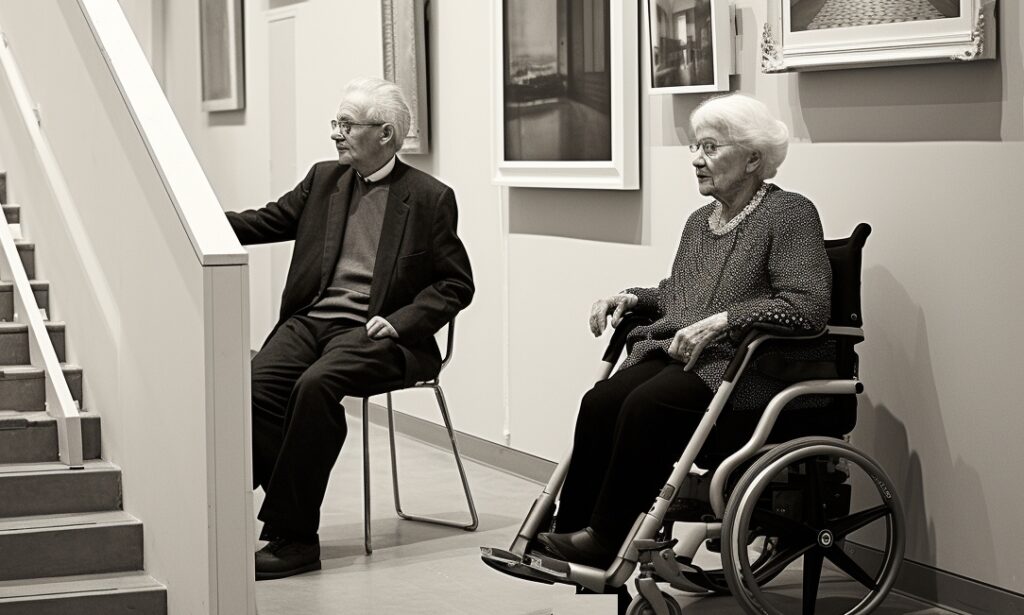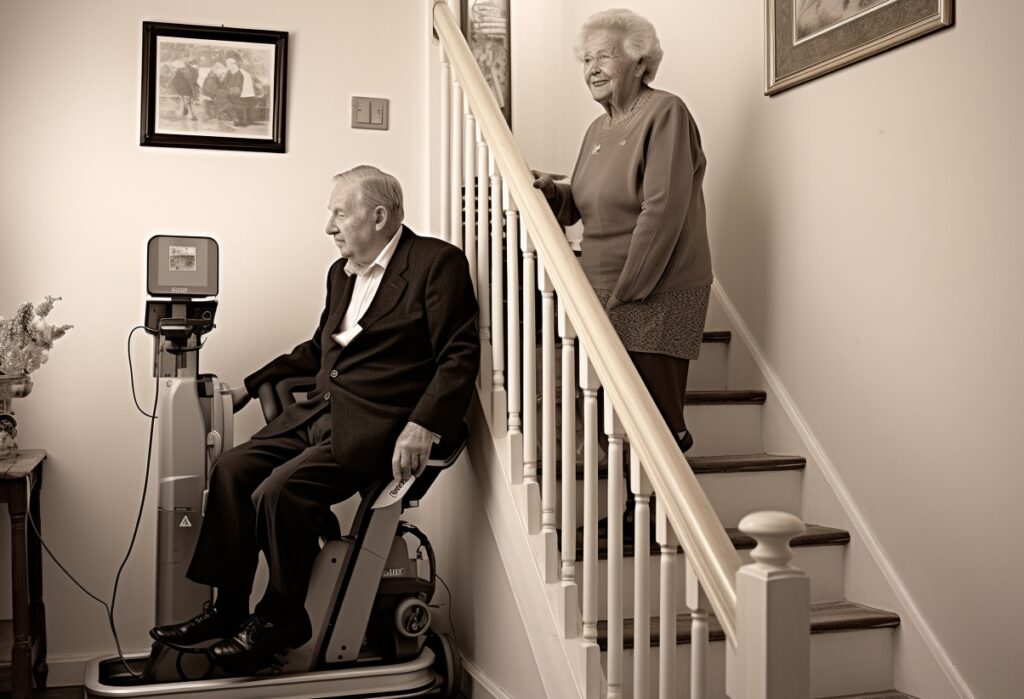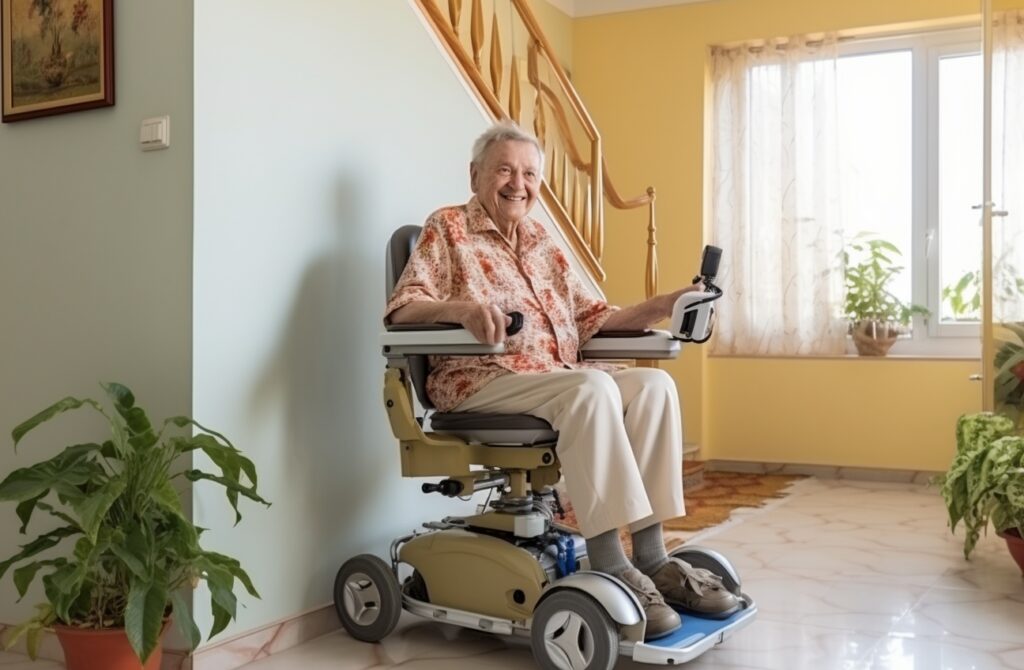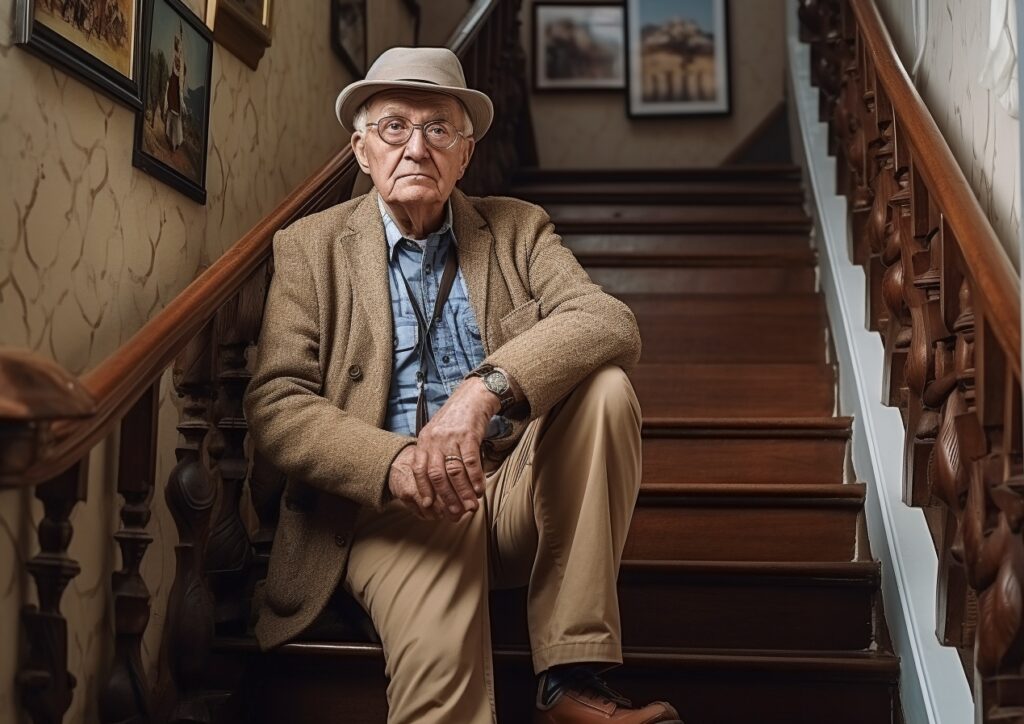The floorboards in my childhood home have a particular creak, a subtle reminder of years gone by. As I tread those same boards, I now navigate the delicate task of caring for my aging mother within these walls, making home modifications for seniors.
New and old memories intertwine, creating a tapestry of love, patience, and sometimes frustration. Isn’t it ironic? The very home that once echoed with my youthful laughter now resonates with my mother’s soft sighs as she attempts to hold on to her independence.
The Challenges of Caregiving
The challenges of caring for an elderly loved one at home can be immense. Sleepless nights, second-guessing every decision, and the constant juggle of work, personal life, and caregiving duties. Yet, amid these trials, one thing stands clear to me: the deep-seated desire we all have to grow old in a place that feels like home. After all, aren’t our homes the very sanctuaries where our stories unfold, where every nook and cranny whispers tales of days gone by?
The Comfort of Familiarity
I’ve come to understand this yearning more profoundly as I watch my mother’s eyes light up when she looks out of her favorite window, the same one she’d glance out of when I was a child. The comfort of familiar surroundings, the memories tethered to each room, the autonomy of one’s space – these are not mere luxuries. They are essential threads in the fabric of our lives, especially as we age. But how do we ensure that our homes remain safe havens and not obstacles in our golden years? How do we balance the heart’s desire and the body’s changing needs? These are the questions that guide my journey, and perhaps, yours too.
The Growing Trend of Home Care
A Shift in Preference
I recently reviewed an enlightening AARP survey. The results? An overwhelming 87% of adults aged 65 and above expressed the desire to remain in their current homes and communities as they age. This statistic resonated deeply with me, echoing sentiments I’ve encountered in my own experiences. But why this shift away from traditional care facilities?

Home: More Than Just Four Walls
The beauty of home care lies not just in the bricks and mortar of one’s dwelling but in the profound sense of autonomy and familiarity it offers. At home, the daily routines, the cherished mementos, and even the familiar sounds and smells contribute to a sense of belonging and emotional well-being. While institutionalized care can offer a structured environment with medical professionals at arm’s length, home care offers a personalized touch, tailored to the unique needs of each individual.
Beyond the Emotional: The Practical Benefits
It’s not just about feelings, though. Home care has tangible benefits. With the advancement of medical technology, many treatments and therapies that were once exclusive to hospitals can now be administered at home. The elderly can receive high-quality care without the sterile backdrop of a facility. Moreover, home care often proves to be more cost-effective in the long run, eliminating the hefty bills associated with prolonged facility stays.
Yet, as with everything, it’s essential to weigh the pros and cons. While home care offers numerous advantages, it requires meticulous planning and often the support of dedicated caregivers. But one thing is clear: the trend is shifting, and the voice of our aging population is loud and clear. They want to age gracefully, in the comfort of their homes, surrounded by memories and loved ones. And who can blame them?
The Importance of Home Adaptation
A Home’s Transformation
A few years ago, when my father’s legs began to betray him, and my mother’s vision started to wane, I was confronted with a difficult reality. Their home, once a haven of warmth and safety, had become a labyrinth of potential hazards. From the slippery bathroom tiles to the high kitchen shelves, every corner seemed to whisper of danger. But the thought of moving them out was unbearable. How could I uproot them from the sanctuary they had built over decades?
Adapting with Love and Care
The solution, as it turned out, was to adapt. We began with small changes: installing grab bars in the bathroom, placing non-slip mats, and lowering the kitchen shelves. As we made these modifications, something remarkable happened. The house began to morph, not just in its physical layout but in its essence. It transformed from a mere structure of bricks and mortar into a living entity, adapting and evolving to cradle its aging inhabitants.
The Emotional Tapestry
Beyond the obvious safety benefits, these changes wove an emotional tapestry that was both profound and heartwarming. Every new fixture became a testament to our love and commitment to their well-being. The newly installed ramps spoke of accessibility, yes, but they also whispered stories of evening strolls and sunset views. The widened doorways were not just about wheelchair access but about opening new chapters of inclusivity and warmth.

More Than Just Physical Changes
But here’s what I’ve come to realize: these adaptations, while undeniably practical, transcend their physical utility. They serve as a bridge, connecting the past’s cherished memories with the present’s changing realities. They are a gentle reminder that while our physical abilities may diminish, our capacity for love, adaptation, and resilience knows no bounds. As I look around this adapted home, I see not just safety rails and ramps but a mosaic of memories, love, and an enduring promise of care.
Starting with the Basics: Home Modifications
A Blueprint for All Ages and Abilities
As I delved deeper into home care, I stumbled upon a term that resonated deeply: universal design. This approach, which aims to create environments that are inherently accessible to both older people and those with disabilities, seemed like a beacon of hope. After all, shouldn’t our homes be welcoming to all, irrespective of age or physical capability?
Adapting to the Ebb and Flow of Life
One fundamental truth I’ve realized in my journey is that our needs and abilities are not static; they ebb and flow with the tides of time. Hence, while we might install handrails and ramps today, our requirements might evolve tomorrow. The beauty of universal design lies in its adaptability. It’s not about making one-off changes but about fostering an environment that can gracefully adapt as we journey through the various stages of life.
Marrying Function with Form
However, a common misconception is that functional modifications might mar the aesthetic appeal of our homes. But why should safety come at the expense of beauty? With thoughtful planning and innovative solutions, we can seamlessly integrate functionality with aesthetics. Think slip-resistant tiles that add a touch of elegance to the bathroom, or handrails that double up as decorative pieces. It’s about reimagining our living spaces in ways that are both safe and visually appealing.
Through this lens of universal design, I’ve come to appreciate the subtle art of creating a home that’s both a safe haven and a reflection of our personal style. It’s a delicate balance, but with the right approach, our homes can truly be sanctuaries for all seasons of life.
Seeking Expert Advice
A Holistic Home Assessment
Over the years, I’ve come to realize that while intuition and personal experiences are invaluable, seeking expert advice elevates our efforts. Home assessments by professionals can bring to light aspects we might overlook. These assessments not only focus on functionality but also the subtleties that make a house feel like a home.
The Many Facets of Professional Insight
Often, when people think of home modifications, they picture construction workers and architects. However, the process involves a symphony of professionals, each playing a pivotal role. Occupational therapists, for instance, offer insights into daily living needs and how spaces can optimize one’s quality of life. Certified Aging-in-Place Specialists (CAPS) blend their knowledge of construction with a deep understanding of the aging process, ensuring homes are both safe and comfortable. Their combined expertise ensures that every corner, every nook of our homes caters to our evolving needs.
Empowering Ourselves with Knowledge
While professional advice is indispensable, empowering ourselves with knowledge equips us to make informed decisions. Resources like the AARP’s HomeFit Guide serve as comprehensive manuals, guiding homeowners through the nuances of adapting their spaces. These tools, combined with professional insights, allow us to transform our homes into sanctuaries, tailored to our unique requirements.
The journey of home modification is complex, but with the right guidance and resources, we can create spaces that are both nurturing and adaptive, echoing the sentiments of our hearts.
Last Words: The Bigger Picture of Home Preparedness
Throughout my journey, both personal and professional, I’ve come to recognize that preparing homes for the elderly isn’t merely about physical alterations. It’s about weaving a tapestry of love, care, and foresight. It’s about understanding the broader implications of our choices, and recognizing that today’s decisions can shape the quality of life for our aging loved ones tomorrow.
Heeding the Call to Action
It’s not just about reading articles or attending seminars. It’s about translating knowledge into action. I urge every reader to take a moment, reflect on their living spaces, and ask themselves: “Is my home ready to cater to the evolving needs of my elderly loved ones?” If the answer is no, it’s time to seek guidance, make assessments, and embark on the fulfilling journey of home modification.
The Emotional Fulfillment of Our Endeavors
At the end of the day, when I see the comfort, security, and joy in the eyes of those we care for, I’m reminded of why we do what we do. The emotional reward of providing a haven, a safe and comforting environment for our aging loved ones, is unparalleled. It’s a testament to the deep bonds of family and the lengths we go to ensure their well-being. It’s about cherishing every moment, and every memory, and making sure that the walls around us reverberate with warmth and love.
In our quest to create a safe harbor, let’s remember that it’s not just about bricks and mortar. It’s about hearts, hands, and hopes intertwined in a dance of love and care.

